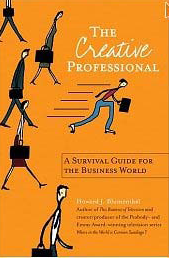 In her best-selling book “Quiet: The Power of Introverts in a World that Can’t Stop Talking,” Susan Cain does a masterful job describing some disconcerting trends that introverts (like me) have sensed but haven’t been able to calmly and thoroughly articulate. She backs up her assertions with detailed research that can help introverts be more confident about everything they have to offer.
In her best-selling book “Quiet: The Power of Introverts in a World that Can’t Stop Talking,” Susan Cain does a masterful job describing some disconcerting trends that introverts (like me) have sensed but haven’t been able to calmly and thoroughly articulate. She backs up her assertions with detailed research that can help introverts be more confident about everything they have to offer.
Cain contends that in this era of the “Extrovert Ideal” there is a very deep and real bias against introverts, particularly in the workplace and in the classroom. She explains it like this: “Introversion—along with its cousins, sensitivity, seriousness, and shyness—is now a second-class personality trait, somewhere between a disappointment and a pathology. Introverts living under the Extrovert Ideal are like women in a man’s world, discounted because of a trait that goes to the core of who they are. Extroversion is an enormously appealing personality style, but we’ve turned it into an oppressive standard to which most of us feel we must conform.”
Although talkative people may be viewed as smarter or more interesting, some of the world’s greatest ideas, art, and inventions have come from quiet people “who knew how to tune into their inner worlds.” Famous introverts include Stephen Spielberg, Bill Gates, Al Gore, Warren Buffett, Mahatma Ghandi, Eleanor Roosevelt, and Rosa Parks.
Rather than urge introverts to come out of their shells, Cain advises business managers, parents, and teachers to give introverts the freedom to be themselves.
A good way to start is to recognize that introverts and extroverts work differently. “Extroverts tend to tackle assignments quickly,” explains Cain. “They make fast (sometimes rash) decisions and are comfortable multitasking and risk-taking. They enjoy the thrill of the chase for rewards like money and status. Introverts often work more slowly and deliberately. They like to focus on one task at a time and can have mighty powers of concentration. They’re relatively immune to the lures of wealth and fame.”
During the seven years Cain spent researching and writing the book, she talked with dozens of psychologists, neuroscientists, business leaders, and professors. For the chapter on “The Myth of Charismatic Leadership,” she visited organizations that make extroversion a prerequisite for leadership, such as Harvard Business School, the Tony Robbins salesmanship workshops, and the Saddleback evangelical church led by Rick Warren.
The book discusses:
- how extroversion became the cultural ideal
- the role of free will in temperament (and the secret of public speaking for introverts)
- how introverts and extroverts think (and process dopamine) differently
- how to talk to members of the opposite type
- how to raise and educate introverted children
- when to act more extroverted than you really are
The Case against Groupthink
The most interesting chapter to me is titled, “When Collaboration Kills Creativity: The Rise of the New Groupthink and the Power of Working Alone.”
Cain believes that by elevating teamwork above all else, Groupthink can stifle productivity at work and deprive schoolchildren of skills they will need to excel in an increasingly competitive world.
She explains that the concept of Groupthink originated during the early days of the Internet. The web enabled groups of introverts to come together and subvert traditional problem-solving methods. The key difference is that the groups responsible for innovations such as Linux and Wikipedia weren’t working in an open-plan office space or participating in face-to-face brainstorming sessions. They had time to think on their own before contributing their ideas to the group.
Once collaboration started to be viewed as a facilitator of success, Cain writes: “We failed to realize that what makes sense in the asynchronous, relatively anonymous interactions of the Internet might not work as well inside the face-to-face, politically charged, acoustically noisy confines of the open-plan office.” She contends that “If you gathered the same people who created Linux, installed them in a giant conference room for a year and asked them devise a new operating system, it’s doubtful that anything so revolutionary would have occurred.”
To illustrate the type of work that can self-motivated introverts can achieve in solitude, she cites passages from Steve Wozniak’s memoir “iWoz: Computer Geek to Cult Icon: How I Invented the Personal Computer, Co-Found Apple, and Had Fun Doing It.”
After attending a meeting of the Homebrew Computer Club in 1975, Wozniak did most of the work on the first Apple computer alone. He writes that, “Most inventors and engineers are like me—they’re shy and they live in their heads. They are almost like artists. And artists work best alone when they can control an invention’s design without a lot of other people designing it for marketing or some other committee. I don’t believe anything revolutionary has been invented by committee.” But, Cain acknowledges that Apple wouldn’t have become the business force that it is today if Wozniak hadn’t collaborated with Steve Jobs, another member of the Homebrew Computer Club.
To explain why solitude is so important to the creative process, Cain references psychologist Anders Ericsson’s theory on the role of deliberate practice in the acquisition of expert performance. Cain writes that, “It’s only when you’re alone that you can engage in deliberate practice, in which you identify the tasks or knowledge that are out of your reach, strive to upgrade your performance, monitor your progress, and revise accordingly.” Deliberate practice requires intense concentration and deep motivation and involves “working on the task that is most challenging to you personally.” The working conditions conducive to deliberate practice aren’t easy to find in many workplaces today.
Cain also cites research that shows that group brainstorming sessions aren’t as productive as when group members work individually to produce ideas. Of course, face-to-face contact is important because it builds trust and relationships. But, Cain argues that group dynamics can impede creative thinking.
Although group brainstorming sessions do make people feel attached, they often don’t result in the best ideas. Some individuals sit back passively and let others take charge. Others don’t want to look foolish in front of their colleagues. Sometimes, the group acquiesces to the people who are most assertive or eloquent, whether their ideas are actually any good or not.
The way to come up with ideas free from the distortions of group dynamics, says Cain, “is not to stop collaborating face to face, but to refine the way we do it.” She writes that: “If it’s creativity you’re after, ask your employees to solve problems alone before sharing their ideas. If you want the wisdom of the crowd, gather it electronically, or in writing, and make sure people can’t see each other’s ideas until everyone has had a chance to contribute.”
The book cites studies showing that the most effective teams include a healthy mix of introverts and extroverts. Cain suggests seeking out symbiotic introvert-extrovert relationships, in which leadership roles and other tasks are divided based on each person’s natural strengths and temperament.
Introverts Can Relate to the Examples
Many passages in Cain’s book echoed experiences from my own career. When I was promoted to the plum assignment of editing a start-up magazine about emerging technologies, some colleagues suggested (behind my back) that I might be “too timid” for the job. Cain emphasizes that there are significant distinctions between being “quiet” and being “shy.”
Plus, Cain says, introverts can successfully stretch themselves to act like extroverts—if they find a job or cause they are passionate about. That was certainly true for me. Whenever I played the role of editor, it was easy to make small talk at trade-show cocktail parties—partly because I could quickly turn the conversation into a more substantive discussion of industry-related news.
Although I loved attending trade shows (where I was privileged to talk one-on-one with some of the brightest people in the technology business), I was content to return to the solitude of my hotel room to reflect and write about what I had seen and learned.
Still, if I had read the book “Quiet” earlier, my career path might have been different. For example, I never overcame my paralyzing fear of public (and extemporaneous) speaking. Instinctively, I have always known that my mind processes information in a way that makes extemporaneous public speaking difficult. In the book “Quiet,” Cain cites research that confirms that there are physiological reasons that introverts have a greater fear of public speaking than extroverts.
She describes attending a public-speaking workshop designed specifically to help introverts overcome these difficulties. You can see how proficient a public speaker she has become by watching the well-received speech she recently gave at a TED conference.
Inspiring Advice
At the end of the book, Cain provides dozens of practical tips for introverts, parents, managers, and spouses of introverts. Here are a few nuggets of her advice for introverts:
- Figure out what you are meant to contribute to the world, and make sure you contribute it. If this requires public speaking, networking, or other activities that make you uncomfortable, do them anyway.
- Use your natural powers of persistence, concentration, insight, and sensitivity to do work you love and work that matters. Solve problems, make art, think deeply.
- Work with colleagues you like and respect.
- Spend your free time the way you like, not the way you think you’re supposed to.
“The secret to life is to put yourself in the right lighting,” writes Cain. “For some it’s a Broadway spotlight; for others it’s a lamplit desk.” As I sit here blogging away at my lamplit desk, I couldn’t agree more!
LINK
“Quiet: The Power of Introverts in a World That Can’t Stop Talking” by Susan Cain
RELATED POST



